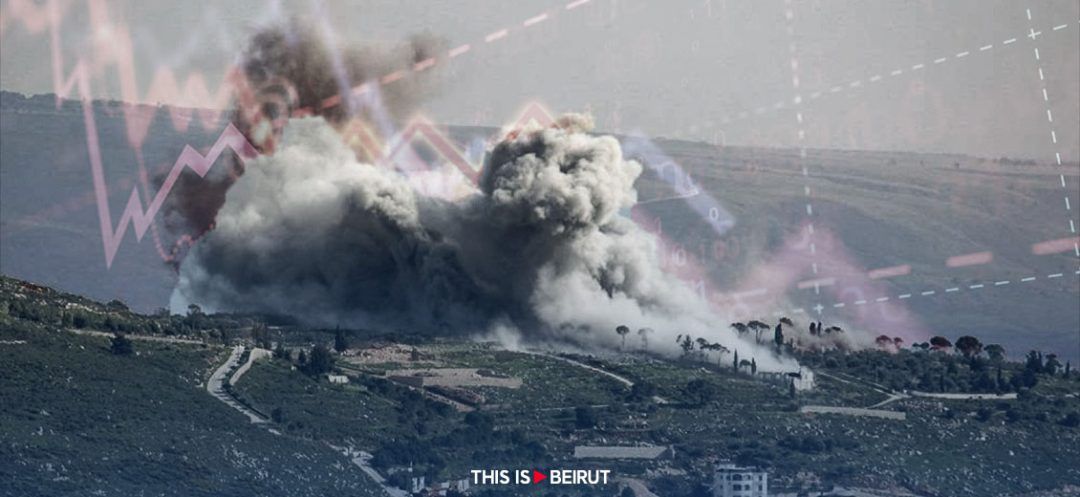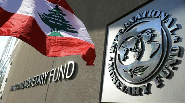
Once again, the Lebanese economy is bearing the heavy brunt of the conflict between Hezbollah and Israel. Initial estimates indicate losses of around USD 2.5 billion in a country already struggling economically.
The military conflict between Hezbollah and Israel is far from over, which makes it difficult to gauge its impact on Lebanon, a country already beset by numerous challenges. Yet initial estimates of the cost of destruction resulting from Israeli attacks since Hezbollah opened the southern front are quite revealing. Some research and statistical institutes agree that these costs hover around USD 2.5 billion, further exacerbating the country's already palpable economic downturn.
Nassib Ghobril, Byblos Bank’s Chief Economist, highlights how October 7, the day Hamas initiated an attack against Israel, changed the dynamics in Lebanon. "Based on my estimates, economic growth was expected to reach 2% in 2023, which would have been the first year of growth since 2017, thanks to tourism activity and certain recovery in the industry, service and agricultural sectors," he said, before adding, "The stability of the exchange rate contributed to positive activity until October 7, 2023."
But the conflict on the southern front dashed all these hopes. "Following this development, the tourism sector bore the brunt, as in October, tourists were still present in Lebanon, and conferences and workshops were scheduled. Even the types of consumption shifted. The Lebanese focused on purchasing essential items. Investments also took a hit," says Ghobril, suggesting that, optimistically, growth would be around 1%. However, he stressed that it is still too early to provide an exact figure. "Activity in the final quarter of 2023 experienced a slowdown, with economic activity nearly at a standstill in South Lebanon. The repercussions of this conflict, even though centered in the southern region, extend across the whole country. We are in the midst of profound uncertainty, and everybody is waiting.”
According to him, three economic scenarios could unfold. The first revolves around the maintenance of the status quo, specifically the persistence of the conflict in South Lebanon, to which he assigns a 40% probability, resulting in a 0.5% economic contraction. The second scenario, with a likelihood of 40%, is total warfare, and would be catastrophic, causing a 20% economic contraction. The third scenario involves a definitive ceasefire, which would yield approximately 1% growth in Lebanon.
Ghobril explains that the longer the conflict lingers, the greater the toll, even if economic activity seems unaffected. "There's a loss of revenue, missed opportunities, postponed investment projects and a lack of confidence," he emphasizes.
The Agricultural Sector Severely Struck
The agricultural sector has suffered the most from the bombings in South Lebanon. This region, blessed with favorable macroclimatic conditions, is highly productive, contributing to approximately 80% of South Lebanon’s Gross Domestic Product (GDP). Nearly 65% of the southern population works in the agricultural sector.
Caretaker Minister of Agriculture Abbas Hajj Hassan estimates losses in the agricultural sector alone at "several billion dollars," emphasizing, however, that this is a theoretical estimate since the war has not ended yet. What is sure, however, is that the destruction of crops and agricultural land, chemical pollution due to phosphorus bombs in particular, as well as the impact on livestock and beekeeping, pose a severe threat to the local economy.
According to sources at the Ministry of Agriculture, wildfires have ravaged six million square meters of forests, olive groves and other plantations. Preliminary figures are alarming: 60,000 olive trees and between 4,000 and 5,000 trees of various species (oaks and pines) have been destroyed. Additionally, 55% of the woods have been burned, and 35% of fruit trees as well as 10% of aromatic herbs (parsley, mint, coriander) have been damaged, according to the same sources.
Tobacco farmers will also be unable to plant this year since they cannot access their lands (production is around two million kilograms of tobacco, representing 55% of the country's production and generating over USD 10 million in revenue).
As for fruits and citrus, the southern region accounts for a staggering 72% of the sector's revenue, generating $16,250,000 out of a total of $22,500,000 across 7,500 hectares of cultivated land. The south contributes 22% of Lebanon's total fruit and citrus production and a significant 38% of the nation's olive yield. These crops are lifelines for the region's residents, particularly those in border villages.
These regions supply 5,000 out of the 25,000 tons of olive oil produced annually in Lebanon. As a result, the losses incurred during the bombings could affect up to a fifth of the profits from Lebanese olive production, amounting to nearly USD 23 million.
Decreased Exportation
An agricultural expert who spoke to This Is Beirut emphasizes the potential for replanting the land, provided that thorough cleaning and checking to ensure that the soil and water were not contaminated by white phosphorus is conducted. However, restoring full productivity requires substantial financial and technical investments.
As outlined in a UNDP report, the devastation and pollution extend beyond crops, impacting livestock, poultry and aquaculture, posing a direct threat to both human and animal health. The use of white phosphorus bombs has made some areas unsuitable for agricultural activities and breeding.
Likewise, as per the Ministry of Agriculture, 340,000 chickens and 970 heads of cattle were killed, alongside the destruction of 91 greenhouses and 310 beehives.
Destroyed Buildings
Besides agriculture, the Southern Council reports 900 buildings destroyed and 10,000 homes severely damaged. Nearly 20% of these residences are now unfit for habitation and at risk of collapse. Around 20 factories and companies have been demolished. Israeli airstrikes have also destroyed hundreds of cars and agricultural equipment.
Moreover, the war has dealt a heavy blow to the tourism industry, which contributes 20% of the country's GDP. While Lebanese expatriates may come back, foreign tourists are unlikely to visit as long as hostilities linger.
Read more




Comments